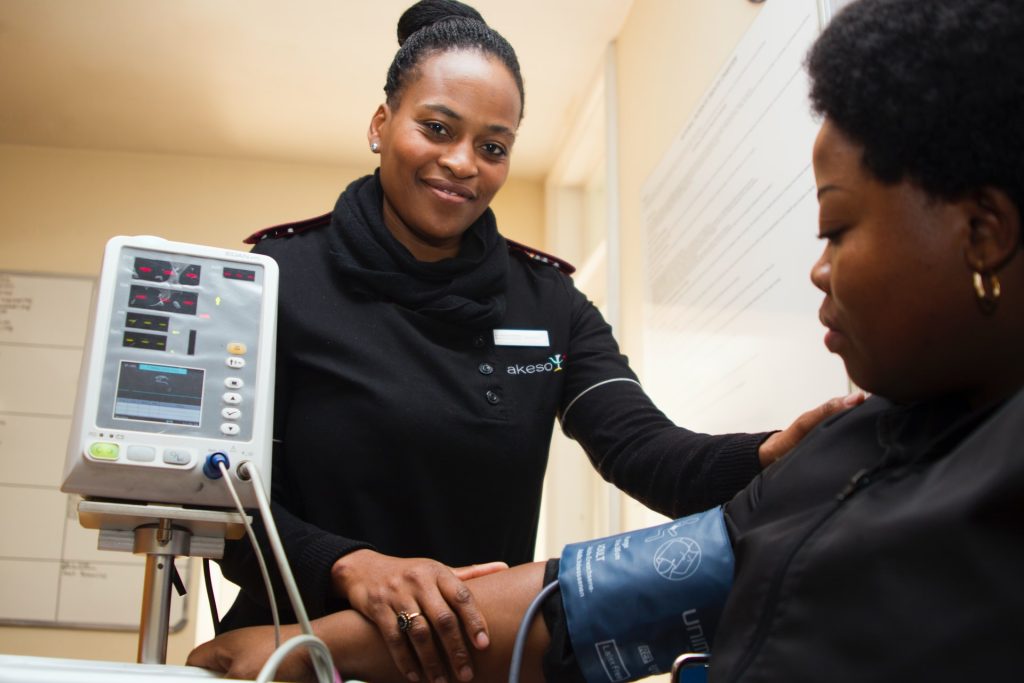Major SAMRC Study Sheds Light on Causes of Disease and Death in SA

By Nthusang Lefafa at Spotlight
Unsafe sex, interpersonal violence, high body mass index (BMI), high systolic blood pressure, and alcohol consumption are the top risk factors for disease and death in South Africa, according to the Second Comparative Risk Assessment (SACRA2) study conducted by the South African Medical Research Council’s Burden of Disease (BOD) Research Unit in collaboration with a long list of researchers. The study was recently published in a series of 15 related articles in the South African Medical Journal.
The study differs from other assessments of what people in South Africa die of in that it focusses on risk factors rather than on the eventual cause of death. This is, for example, why the study considers factors like unsafe sex or high body mass index rather than HIV or diabetes.
According to a related policy brief, the aim of the study was “to quantify the contribution of 18 selected risk factors to identify areas of public health priority”. The idea is that policymakers can use these findings to address the underlying causes of death and disease in South Africa since the identified risk factors are considered to be modifiable.
“We have to reduce the underlying drivers of disease and death if we are to improve the health of South Africans,” said CEO and President of the SAMRC Professor Glenda Gray in a statement. “Knowing that this is possible, should strengthen our resolve to ensure that this is accomplished.”
Causes of lost DALYs
Rather than only looking at what people died of, the researchers estimated the lost disability-adjusted life years (DALYs) associated with various risk factors. The World Health Organization describes DALYs as “a time-based measure that combines years of life lost due to premature mortality (YLLs) and years of life lost due to time lived in states of less than full health, or years of healthy life lost due to disability (YLDs). One DALY represents the loss of the equivalent of one year of full health.”
The researchers calculated the proportion of the total burden of disease (measured as DALYs) that can be attributed to each of the 18 risk factors in South Africa in 2012. Unsafe sex was top of the list at 26.6%, followed by interpersonal violence at 8.5%, high body mass index at 6.9%, high systolic blood pressure at 5.8%, and alcohol consumption at 5.6%. There were some differences by sex, with alcohol consumption, for example, ranking third in males, while it ranked fifth overall.
“Improvements have been observed, in particular, the reductions in the burden attributable to household air pollution and water and sanitation,” read the policy brief. “On the other hand, shifts in cardiometabolic risk factors, particularly the rapid emergence of high fasting plasma glucose accompanied by increases in high systolic blood pressure and high BMI, can be seen as well as the increased impact of ambient air pollution.”
According to project lead and BOD Unit Director Professor Debbie Bradshaw, while unsafe sex and interpersonal violence remained high on South Africa’s risk profile for the study period, non-communicable diseases combined are at an all-time high and are highly likely to overtake unsafe sex and interpersonal violence as causes of death and disease in South Africa.
Findings only up to 2012
The SACRA2 findings cover the period from 2000 to 2012. One reason for it only being published now is that the study required access to a wide variety of data sources. “Each data set had to be evaluated to identify any weaknesses or possible bias so that we can develop a robust understanding [of] the trends in the risk factors. This is a painstaking task, involving a large number of scientists, and means that we have only been able to describe the trends for the period 2000 – 2012,” says Bradshaw.
While robust and more up-to-date estimates would likely only come from the next SACRA study, it seems likely that some of the trends identified in SACRA2 would have continued in the years since 2012. For example, findings from SACRA2 suggest that the burden attributable to unsafe sex peaked in 2006 and has been declining ever since, largely due to the provision of antiretroviral treatment. Evidence from other sources, such as Thembisa, the leading mathematical model of HIV in South Africa, suggests that the decline in HIV-related deaths and the increase in treatment coverage have continued in the years since 2012.
Bradshaw describes unsafe sex as a lack of condom use which leads to sexually transmitted infections (STIs) and the possible transmission of HIV.
“Condom use is very important. If we get rid of unsafe sex, we will see the number of people being infected with HIV and STIs being reduced,” she said. “It is important that these epidemic drivers are not neglected in the push towards meeting the 90-90-90 management targets for 2022 and the 95-95-95 targets by 2030. HIV communication programmes should continue to promote male circumcision and risk awareness in the context of non-marital relationships to prevent HIV transmission.” (The first 90/95 refers to the percentage of people living with HIV who are diagnosed, the second to the percentage of those diagnosed on treatment, and the third to the percentage of those on treatment who are virally suppressed.)
Interpersonal violence declining
As with unsafe sex, the trend with interpersonal violence in South Africa also appears to be downward, although, as Megan Prinsloo, a researcher at the SAMRC, and colleagues highlight in one of the 15 papers, it continues to be a leading public health problem for the country.
The researchers found that between 2000 and 2012, there was a decrease in the death rate associated with interpersonal violence from 100 per 100 000 to 71 per 100 000. There was also a decrease in lost DALYs attributable to interpersonal violence from an estimated 2 million in 2000 to 1.75 million in 2012.
“Further strengthening of existing laws pertaining to interpersonal violence, and other prevention measures are needed to intensify the prevention of violence, particularly gender-based violence,” the researchers wrote.
High BMI and high blood pressure

A high BMI is associated with several cardiovascular diseases, diabetes, and chronic kidney disease, among others. According to one of the SACRA2 papers, high BMI caused around 59 000 deaths in 2012. Over the study period, the burden was higher in males than in females. Type 2 diabetes was the leading cause of death attributable to high BMI in 2012, followed by hypertensive heart disease, haemorrhagic stroke, ischaemic heart disease, and ischaemic stroke.
The researchers found that the average BMI increased between 2000 and 2012 and accounted for a growing proportion of both total deaths and DALYs.
High systolic blood pressure is similarly linked to an increased risk of several conditions, including stroke and heart disease. According to a paper by Beatrice Nojilana, a senior research scientist at the SAMRC, and colleagues, the prevalence of hypertension in people aged 25 and older increased from 2000 to 2012 – 31% to 39% in men and 34% to 40% in women.
But there is some interesting nuance. In both men and women, age-standardised rates for deaths and DALYs associated with raised systolic blood pressure increased between 2000 and 2006 but decreased from 2006 to 2012.
High systolic blood pressure is estimated to have caused around 62 000 deaths in South Africa in 2012. Stroke (haemorrhagic and ischaemic), hypertensive heart disease, and ischaemic heart disease accounted for over 80% of the disease burden attributable to raised systolic blood pressure over the period.
Alcohol abuse

In another SACRA2 paper, Dr Richard Matzopoulos, chief specialist scientist at the SAMRC, and colleagues, point out that alcohol abuse has widespread effects on health and contributes to over 200 health conditions. They write that, although the pattern of heavy episodic drinking independently increases the risk for injuries and transmission of some infectious diseases, long-term average consumption is the fundamental predictor of risk for most conditions.
The researchers used data from 17 population surveys to estimate age- and sex-specific trends in alcohol consumption in the adult population of South Africa between 1998 and 2016. For each survey, they calculated sex- and age-specific estimates of the prevalence of drinkers and the distribution of individuals across consumption categories.
Among males, the prevalence of drinkers was found to have decreased between 1998 and 2009, from 56.2% to 50.6%, but had increased again by 2016. Among females, the prevalence of current drinkers rose slightly from 19% in 1998 to 20% in 2016.
Speaking to Spotlight, Matzopoulos stresses that alcohol abuse puts a heavy burden on the already strained health system. “When you enter the trauma unit at hospitals on weekends, all you can smell is alcohol,” he said.
He says in some of his research he has noted a shift where young females are engaging in heavy drinking and young males are engaging in binge drinking over weekends. “These patterns are alarming because alcohol abuse can lead to unsafe sex, which may lead to the transmission of HIV and STIs. Excessive alcohol use also has an impact on some NCDs and can compromise the immune system of a person who is on ARV treatment,” he said.
Matzopoulos said government can put in place policies such as the restriction of alcohol sales, banning alcohol advertising, and increasing the price of alcohol.
Republished from Spotlight under a Creative Commons 4.0 Licence.
Read the original article here.





